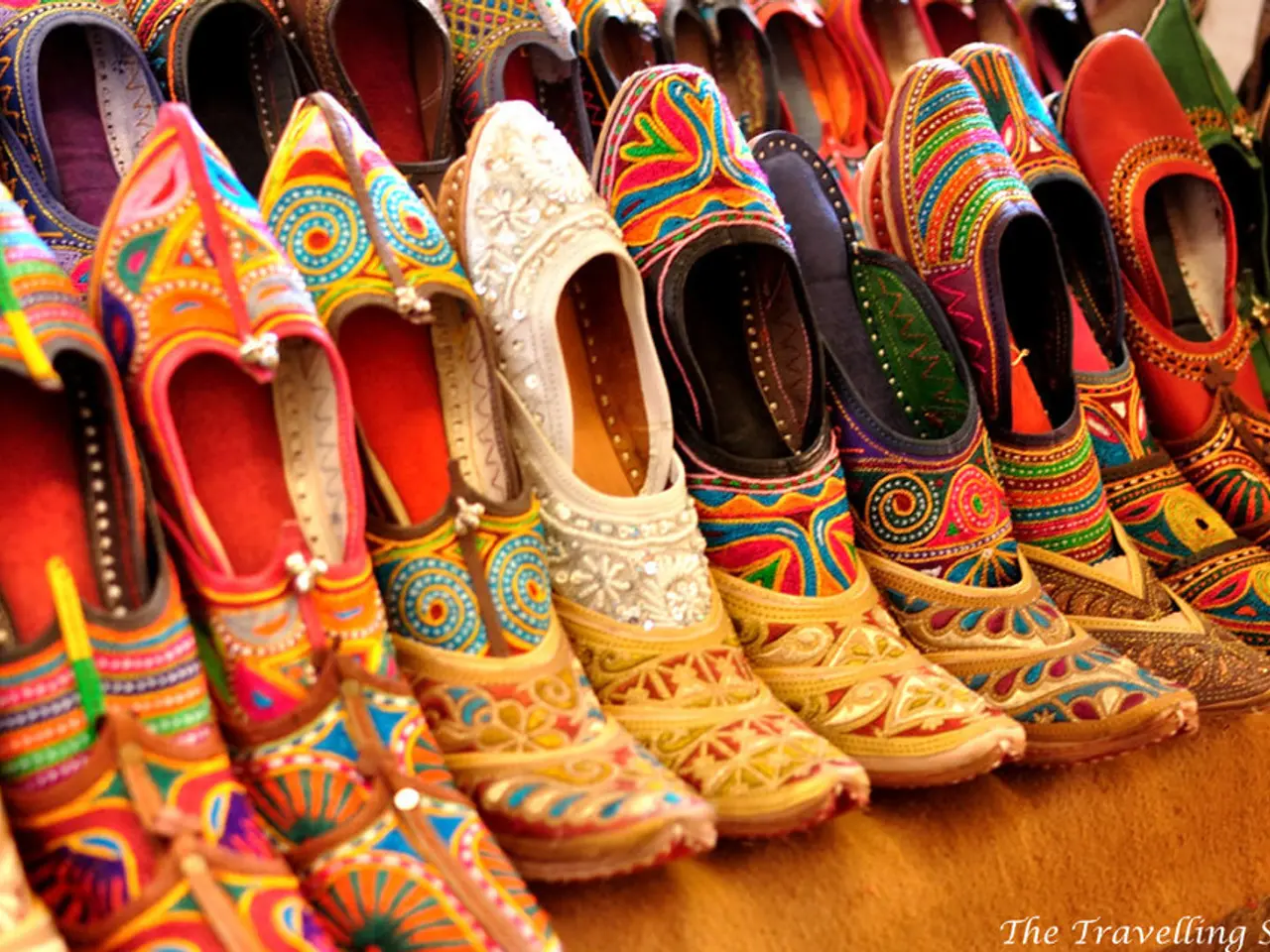Eczema on the feet: Symptoms and additional information
Foot dyshidrotic eczema is a common skin condition that primarily affects the soles of the feet and the edges of the toes. This condition can be triggered by a variety of factors, making it essential for individuals to understand its causes and symptoms.
The triggers for foot dyshidrotic eczema are numerous. Excessive sweating, especially in hot and humid weather or due to tight footwear that traps moisture, is a common culprit. Stress and emotional factors can also provoke flare-ups. Allergic reactions, including contact allergies to certain metals such as nickel and cobalt, are frequent triggers. Exposure to soaps, detergents, and cleaning products that irritate the skin, contact with metals, and other environmental factors like heat and humidity worsen symptoms.
Foot dyshidrotic eczema typically starts with a burning or prickling sensation of the skin, followed by itching. Then, a sudden eruption of tiny blisters appears on the soles of the feet and edges of the toes. People with a darker skin tone may develop long-lasting dark spots after the blisters have cleared, while others may experience dry, flaky skin once the blisters have cleared, which can crack and become painful.
Anyone can develop foot dyshidrotic eczema, although it is more common in adults between the ages of 20 and 40, and more frequently affects females. If someone suspects they may have foot dyshidrotic eczema, a dermatologist must conduct a complete examination before diagnosing them.
If a person receives a diagnosis of foot dyshidrotic eczema, a dermatologist may advise some treatments. These can include cold soaks, moisturizing creams, topical corticosteroids, oral medications, light therapy, and even antifungal medication if a fungal infection is present on the feet. Home remedies, such as using lukewarm water when washing, washing with mild fragrance-free cleansers, applying a moisturizer or barrier repair cream, resting and reducing stress, avoiding scratching, taking precautions in extreme weather conditions, and avoiding triggers, can also help manage flares.
It's important to note that foot dyshidrotic eczema is not contagious - a person cannot pass it on to another person. However, it is not a fungal infection, although fungal infections such as athlete's foot may trigger dyshidrotic eczema.
If there is an infection of the blisters, antibiotics may be required. Topical calcineurin inhibitors (TCIs), corticosteroids, and anti-itch medications are other treatments that a dermatologist may advise. Foot dyshidrotic eczema can range from affecting a person only once to being a chronic, debilitating skin condition.
The exact cause of foot dyshidrotic eczema remains unknown, but research suggests a fungal imbalance of the skin can cause a response in the immune system that may trigger dyshidrotic eczema. People can find the skin where the blisters occur wet with sweat.
In conclusion, understanding the causes and symptoms of foot dyshidrotic eczema is crucial for managing this condition. By avoiding triggers and seeking medical advice, individuals can find relief from the discomfort caused by this skin condition. If you suspect you have foot dyshidrotic eczema, it's essential to consult with a dermatologist for a proper diagnosis and treatment plan.
- Excessive sweating, tight footwear, stress, and allergic reactions can trigger foot dyshidrotic eczema, a common skin condition that affects the soles and edges of toes.
- Foot dyshidrotic eczema often brings a burning or prickling sensation, followed by itching, and the emergence of tiny blisters.
- In some cases, people with foot dyshidrotic eczema may experience long-lasting dark spots on darker skin or dry, flaky skin once blisters have cleared.
- This condition, more prevalent in adults between 20-40 and females, can be diagnosed by a dermatologist after a complete examination.
- Treatment options include cold soaks, creams, topical corticosteroids, oral medications, and light therapy, with home remedies also offering relief.
- It's not contagious, but foot dyshidrotic eczema may be aggravated by fungal infections like athlete's foot.
- If blisters become infected, antibiotics might be necessary, with topical calcineurin inhibitors, corticosteroids, and anti-itch medications also being viable treatments.
- Research indicates a possible connection between foot dyshidrotic eczema and a fungal imbalance of the skin that may initiate an immune response.
- Pursuing a medical consultation is crucial for understanding the condition and finding relief from the discomfort caused by foot dyshidrotic eczema.
- Diseases such as diabetes, obesity, and psychiatric conditions like depression can increase one's susceptibility to foot dyshidrotic eczema, emphasizing the need for individuals to take care of their overall health and wellness.
- The medical-conditions landscape has been advanced by science, offering predictive entities and skin-care solutions to improve the quality of life for those dealing with various health issues, including foot dyshidrotic eczema.




